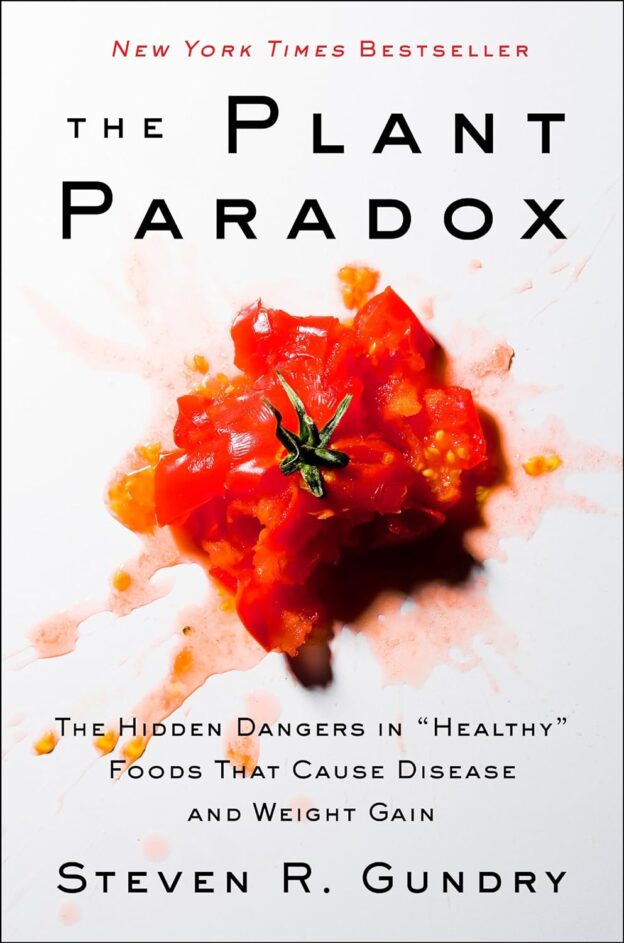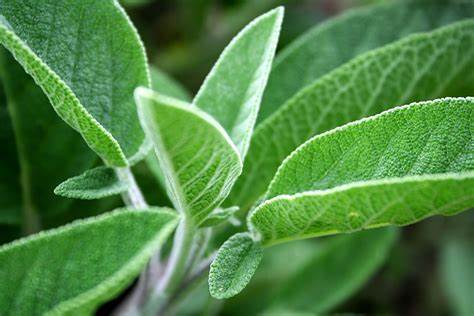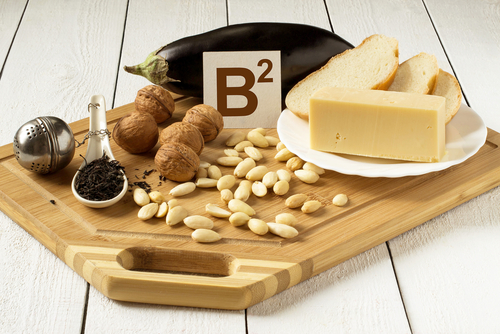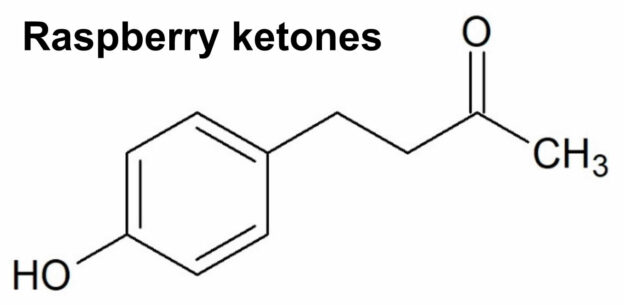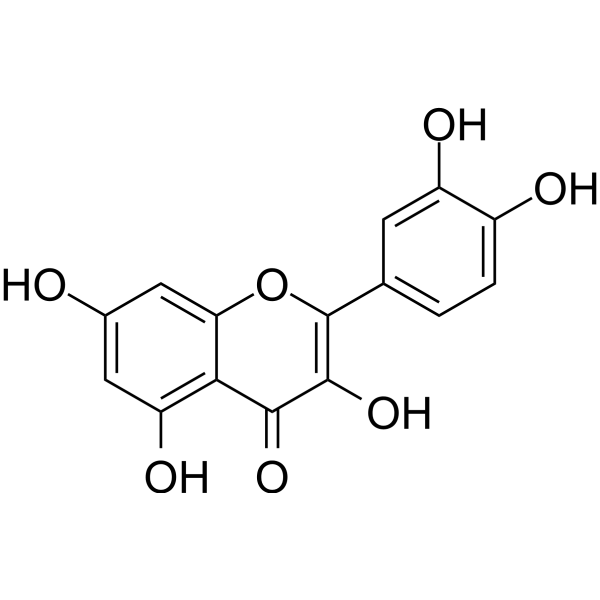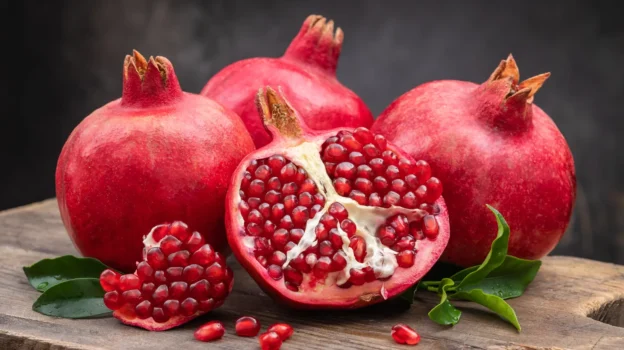The world of nutrition is often filled with contradictions and controversies, leaving many of us wondering what to eat and what to avoid. The latest buzzworthy book to shake up the dieting landscape is Dr. Steven Gundry’s “The Plant Paradox,” which reveals a surprising truth about the way our bodies process certain foods. According to Dr. Gundry, many of the plant-based foods we once thought were healthy, such as beans, grains, and even vegetables, are actually toxic to our bodies. In this thought-provoking post, we’ll delve into the fascinating science behind Dr. Gundry’s theories and explore the surprising foods that are hiding in plain sight, waiting to wreak havoc on our digestive systems. From the shocking truth about lectins to the surprising benefits of a plant-based diet, we’ll uncover the secrets of the Plant Paradox and help you make informed choices about the foods you eat.
1. The Plant Paradox: What is it and why should I care?
The Plant Paradox is a groundbreaking concept that has been gaining attention in the world of health and wellness, and for good reason. It’s a revolutionary perspective that challenges our traditional understanding of nutrition and the role of plants in our diet. At its core, the Plant Paradox is a paradigm-shifting idea that proposes that many of the foods we consider “healthy” – the ones we’re encouraged to eat in abundance, like fruits, vegetables, and whole grains – are actually toxic to our bodies.
The idea may seem counterintuitive, but the science behind it is compelling. Dr. Steven Gundry, a renowned cardiothoracic surgeon, has spent years researching the effects of plant-based foods on our bodies. His groundbreaking research has revealed that the lectins, a type of protein found in many plant-based foods, can cause inflammation, damage our gut health, and even lead to chronic diseases like heart disease, diabetes, and even cancer.
So, why should you care? The Plant Paradox has the potential to revolutionize the way we think about food and our relationship with our bodies. By understanding the surprising truth about our favorite foods, we can make informed choices that support our health and well-being, rather than unwittingly harming ourselves. In this blog post, we’ll delve into the fascinating world of the Plant Paradox, exploring the surprising truth about your favorite foods and what it means for your health.
2. The surprising truth about lectins and their effects on the body
As we delve deeper into the world of The Plant Paradox, it’s essential to understand the concept of lectins, which may seem like a foreign term to many of us. But fear not, for these tiny molecules play a significant role in our overall health and well-being. Lectins are naturally occurring proteins found in plants, and they have a unique ability to bind to specific cells and tissues in our bodies. While they may seem harmless, the truth is that lectins can have a profound impact on our digestive system, immune system, and even our brain function.
In fact, many modern foods, including those that are considered “healthy” or “natural,” contain high levels of lectins. From grains and legumes to even some fruits and vegetables, it’s astonishing to learn that these seemingly innocent foods can cause a cascade of negative effects on our bodies. The body’s response to lectins can range from mild discomfort, such as bloating and gas, to more severe symptoms like joint pain, skin rashes, and even autoimmune disorders.
But here’s the surprising twist: while some foods may be inherently “bad” due to their high lectin content, others may be surprisingly beneficial. For instance, certain fruits and vegetables, when consumed in moderation and prepared properly, can provide a wealth of nutritional benefits. By understanding the intricacies of lectins and how they interact with our bodies, we can make informed choices about the foods we eat and take control of our health.
3. The difference between good and bad lectins
As we delve deeper into the Plant Paradox, it’s essential to understand the crucial distinction between good and bad lectins. Lectins are proteins found in plant-based foods, and they play a significant role in determining the nutritional value and potential harm of these foods. Good lectins, often referred to as “friendly” or “beneficial” lectins, are typically found in foods that have been consumed for thousands of years, such as beans, lentils, and whole grains. These lectins are harmless and can even provide various health benefits, such as improving digestion and boosting the immune system.
On the other hand, bad lectins, or “toxic” lectins, are found in foods that are often considered “modern” or “processed,” such as peanuts, soybeans, and corn. These lectins can be highly destructive, causing inflammation, gut damage, and even contributing to the development of chronic diseases. The key to unlocking the secrets of the Plant Paradox lies in understanding how to differentiate between these two types of lectins and making informed choices about which foods to include and avoid in your diet. By doing so, you can harness the benefits of good lectins while minimizing the negative effects of bad lectins, ultimately leading to a healthier and more balanced lifestyle.
4. How to identify lectin-rich foods
The journey to understanding the Plant Paradox begins with recognizing the sneaky culprits that lurk within the aisles of your local grocery store. Lectin-rich foods, in particular, have been hiding in plain sight, masquerading as harmless staples in your diet. But, don’t be fooled – these silent saboteurs can wreak havoc on your digestive system and even contribute to chronic inflammation. To unlock the secrets of the Plant Paradox, it’s essential to identify these lectin-rich foods and banish them from your pantry.
From the humble legume to the seemingly innocent sweet potato, lectin-rich foods are found in abundance in the modern diet. The key is to recognize their subtle patterns and habits, such as the way they tend to congregate in one corner of the produce section or masquerade as health foods. By developing a keen eye for these lectin-rich foods, you’ll be empowered to make informed choices and take control of your health.
Some of the most common culprits include beans, peanuts, corn, and wheat, as well as certain types of fruits and vegetables like nightshades, tomatoes, and eggplants. By learning to identify these foods and avoiding them, you’ll be taking a crucial step towards reclaiming your health and unlocking the secrets of the Plant Paradox.
5. Common misconceptions about food and health
As we delve deeper into the Plant Paradox, it’s essential to debunk the common misconceptions that have been perpetuated about food and health. One of the most pervasive myths is that all plant-based foods are automatically healthy and good for us. However, this couldn’t be further from the truth. Many so-called “healthy” foods, such as legumes, grains, and starchy vegetables, contain lectins that can wreak havoc on our digestive system and even cause chronic inflammation.
Another misconception is that all processed foods are inherently unhealthy. While it’s true that many processed foods are loaded with added sugars, artificial ingredients, and unhealthy fats, there are some processes that can actually make food healthier, such as fermenting or sprouting. The key is to understand how to identify and choose the right processed foods that support our overall health and well-being.
Additionally, many of us believe that we need to cut out entire food groups, such as dairy or gluten, to achieve optimal health. However, this approach can be overly restrictive and may not be necessary for everyone. The Plant Paradox teaches us that it’s not about eliminating entire food groups, but rather about understanding how to eat in a way that supports our unique biology and nutritional needs.
By separating fact from fiction and adopting a more nuanced approach to food and health, we can unlock the secrets of the Plant Paradox and unlock our full potential for optimal health and well-being.
6. The top 10 lectin-rich foods to avoid
As you delve deeper into the Plant Paradox, you may be surprised to discover that many of your favorite foods are hiding a secret: they’re packed with lectins, a type of protein that can wreak havoc on your gut health. From the humble sweet potato to the trendy kombucha, it’s not just the usual suspects that contain high levels of lectins. In this section, we’ll be counting down the top 10 lectin-rich foods to avoid, or at least approach with caution.
First up is the seemingly innocent tomato. While a juicy, ripe tomato is a staple of many a salad, its lectin content is anything but innocent. In fact, a single cup of cooked tomatoes can contain a whopping 240 milligrams of lectins, making it one of the top 10 lectin-rich foods to avoid. But don’t worry, we’ll also be sharing some tips on how to make tomatoes a part of a lectin-friendly diet.
Next, we’ll be exploring the world of legumes, which are notorious for their high lectin content. From the humble bean to the more exotic lentil, these foods are often touted for their health benefits, but may actually be doing more harm than good. We’ll be counting down the top 5 lectin-rich legumes to avoid, and sharing some delicious alternatives to make your meal planning a breeze.
But don’t think that all hope is lost for your favorite foods. We’ll also be sharing some simple cooking techniques and substitutions to make even the most lectin-rich foods a part of your diet. So, whether you’re a health enthusiast or just looking to make some positive changes to your diet, this section will give you the tools you need to unlock the secrets of the Plant Paradox and start feeling the benefits for yourself.
7. The 10 foods that are surprisingly low in lectins
As we delve deeper into the world of the Plant Paradox, it’s time to set the record straight on some of your favorite foods. You might be surprised to learn that not all plant-based foods are created equal when it comes to lectin content. In fact, some of the most unexpected foods may be hiding in plain sight, boasting surprisingly low levels of lectins. Think outside the box, and you’ll discover a whole new world of lectin-friendly options.
From the humble asparagus to the sweet, succulent dates, these 10 foods will challenge your assumptions about the lectin-rich diet. Say goodbye to the myth that all plant-based foods are off-limits, and hello to a world of delicious, lectin-friendly possibilities. In this section, we’ll explore the top 10 foods that are surprisingly low in lectins, giving you the power to re-think your diet and unlock the secrets of the Plant Paradox.
8. How to prepare and cook lectin-free meals
The art of cooking lectin-free meals – a culinary journey that requires patience, creativity, and a willingness to rethink the way we approach our favorite foods. Gone are the days of relying on processed foods and sugary snacks, as the Plant Paradox demands a more nuanced approach to cooking. But fear not, dear readers, for this section will guide you through the process of transforming your kitchen into a lectin-free haven.
Imagine the aroma of sautéed vegetables, the crunch of a fresh salad, and the savory flavor of a well-seasoned stir-fry, all without the presence of those pesky lectins. It’s a culinary utopia, where the health benefits of your food are matched only by the delightful flavors and textures.
In this section, we’ll delve into the world of lectin-free cooking, providing you with practical tips and techniques for preparing delicious meals that cater to your dietary needs. From the basics of cooking grains and legumes, to the art of marinating and seasoning, we’ll cover it all. You’ll learn how to substitute lectin-rich ingredients with their lectin-free counterparts, and discover new ways to use herbs and spices to add flavor and depth to your dishes.
With the Plant Paradox as your guide, you’ll be equipped to tackle even the most challenging recipes, and create a repertoire of lectin-free meals that will delight your taste buds and nourish your body. So, let’s get cooking, and unleash the secrets of the Plant Paradox in your kitchen!
9. The importance of gut health and lectin-free eating
As we delve deeper into the world of the Plant Paradox, it’s essential to understand the intricate relationship between our gut health and the foods we consume. Dr. Gundry’s groundbreaking research has revealed that the key to unlocking optimal health lies not only in the quality of our diet but also in the harmony of our gut microbiome. The gut, often referred to as the “second brain,” is a complex ecosystem of trillions of microorganisms that play a vital role in our overall well-being. When this delicate balance is disrupted, it can lead to a myriad of health issues, from digestive problems and inflammation to chronic diseases like diabetes and even Alzheimer’s.
The concept of lectin-free eating is a crucial aspect of the Plant Paradox, as it focuses on eliminating or reducing the consumption of foods that are high in lectins, a type of protein found in many plant-based foods. Lectins, while naturally occurring in plants, can be toxic to the human body, particularly in individuals with compromised gut health. By adopting a lectin-free diet, individuals can alleviate symptoms of leaky gut syndrome, reduce inflammation, and even experience improved digestion and reduced bloating. The benefits of gut health and lectin-free eating extend far beyond just physical health, as they have also been linked to improved mental clarity, reduced stress, and enhanced overall well-being.
In the next section, we’ll explore the specific foods that are high in lectins and provide actionable tips on how to incorporate a lectin-free diet into your daily routine. By understanding the importance of gut health and lectin-free eating, you’ll be empowered to make informed choices about the foods you eat and take the first step towards unlocking the full potential of the Plant Paradox.
10. How to transition to a lectin-free diet
The journey to a lectin-free diet is not without its challenges. Let’s face it, many of the foods we’ve grown to love and rely on contain high levels of lectins, making it difficult to suddenly cut them out of our diets. But with the right approach, transitioning to a lectin-free lifestyle can be a game-changer for your health. The key is to start small and gradually eliminate the foods that are most likely to trigger inflammation and other negative reactions.
Imagine taking a trip to a foreign country where you’re not familiar with the local cuisine. You wouldn’t want to dive headfirst into a new dish without getting a sense of what’s in it, would you? Similarly, when transitioning to a lectin-free diet, it’s essential to take things one step at a time. Begin by identifying the most common lectin-containing foods in your diet, such as beans, grains, and nightshades. Then, start by replacing one or two of these foods with lectin-free alternatives, such as vegetables, fruits, and lean proteins.
As you progress on your journey, you’ll start to notice the benefits of a lectin-free diet, from increased energy levels to improved digestion and reduced inflammation. And the best part? You’ll be paving the way for a lifetime of healthier eating habits. So, take the leap and start your lectin-free journey today. Your body will thank you.
11. Common side effects and benefits of a lectin-free diet
As you embark on the transformative journey of the Plant Paradox diet, it’s essential to understand the potential effects it can have on your body. One of the most significant changes you may experience is the elimination of common food staples that have been hiding in plain sight, disguising themselves as healthy options. The sudden absence of these foods can lead to a range of initial side effects, from mild discomfort to more pronounced reactions.
Some common complaints include digestive changes, such as bloating, gas, and altered bowel movements. These symptoms can be attributed to the body’s sudden withdrawal from the constant bombardment of lectins, which can cause inflammation and irritation in the digestive system. Additionally, some individuals may experience flu-like symptoms, such as fatigue, headaches, and muscle aches, as their body adjusts to the new dietary regimen.
However, the benefits of a lectin-free diet far outweigh the initial side effects. Many individuals have reported significant improvements in their overall health, including reduced inflammation, improved digestion, and increased energy levels. The elimination of lectins can also lead to a decrease in symptoms associated with chronic diseases, such as arthritis, autoimmune disorders, and even mental health conditions.
As you navigate the Plant Paradox diet, it’s crucial to remember that these initial side effects are temporary and a natural part of the transition process. With patience, persistence, and a willingness to adapt, you can unlock the full potential of this groundbreaking dietary approach and experience the transformative benefits that have inspired countless individuals to adopt this lifestyle.
12. The Plant Paradox diet plan: A step-by-step guide
As you embark on the Plant Paradox journey, you’ll be guided by Dr. Gundry’s expert advice on how to transition your diet to a healthier, more sustainable lifestyle. The Plant Paradox diet plan is designed to be a gradual and flexible approach, allowing you to adjust your eating habits at your own pace.
The step-by-step guide is broken down into four phases, each with its own set of rules and guidelines. The first phase, “The Cleanse,” is a 7-day introduction to the diet, where you’ll eliminate some of the most common inflammatory foods from your diet. The next phase, “The Reboot,” is a 30-day period where you’ll continue to refine your diet, focusing on nutrient-dense foods and eliminating any remaining problematic foods.
In the “The Balance” phase, you’ll focus on maintaining your new habits and making sustainable lifestyle changes. The final phase, “The Mastery,” is all about fine-tuning your diet and making it a long-term part of your lifestyle. With each phase, you’ll be given a set of rules and guidelines to follow, as well as delicious and healthy recipes to help you stay on track.
Throughout the Plant Paradox diet plan, you’ll also be introduced to the concept of ” lectins” and how to identify and avoid them. You’ll learn how to shop for and prepare your meals, and how to make smart choices when eating out. With the Plant Paradox diet plan, you’ll be empowered to take control of your health and make lasting changes that will benefit your body and mind for years to come.
13. The role of gut bacteria and lectins in overall health
The intricate dance between gut bacteria and lectins is a crucial aspect of the Plant Paradox, a concept that challenges our conventional understanding of nutrition and its impact on our overall health. In this delicate interplay, gut bacteria play a vital role in shaping our relationship with the food we eat. These microorganisms, often referred to as the “gut microbiome,” are responsible for breaking down and processing the nutrients we consume. However, when we eat foods high in lectins, which are found in many common plant-based foods, our gut bacteria are put to the test.
Lectins, a type of protein, can have a profound effect on our gut health, binding to the lining of our gut and causing inflammation, damage, and even permeability of the gut wall. This can lead to a range of symptoms, from bloating and digestive discomfort to more severe conditions like irritable bowel syndrome (IBS) and even autoimmune disorders. The gut bacteria, in turn, can influence the way we respond to these lectins, either by breaking them down effectively or allowing them to cause harm.
Understanding the complex interplay between gut bacteria and lectins is crucial for unlocking the secrets of the Plant Paradox. By recognizing the importance of these factors, we can begin to make informed choices about the foods we eat, taking steps to nourish our gut health and promote overall well-being.
14. How to maintain a balanced diet and avoid nutrient deficiencies
As you navigate the complex world of The Plant Paradox, it’s easy to get caught up in the excitement of discovering new foods and habits. But, it’s equally important to ensure that you’re maintaining a balanced diet that meets your body’s nutritional needs. After all, the right foods can be a powerful tool for boosting your overall health and well-being. But, without a solid understanding of how to combine these foods in a way that supports your body’s unique needs, you may be setting yourself up for nutrient deficiencies and other health issues.
The key to avoiding these pitfalls is to focus on whole, unprocessed foods that are rich in nutrients and fiber. This means incorporating a wide variety of fruits, vegetables, nuts, and seeds into your diet, while also limiting your consumption of processed and packaged foods. By doing so, you’ll be able to support your body’s natural detoxification processes, boost your energy levels, and maintain a healthy gut microbiome.
In addition to focusing on whole foods, it’s also important to pay attention to the nutrient-dense foods that are rich in vitamins, minerals, and other essential nutrients. These foods, such as leafy greens, berries, and fatty fish, are the building blocks of a healthy diet and can help to support your body’s overall function. By incorporating these foods into your diet, you’ll be able to maintain a balanced level of essential nutrients, and reduce your risk of developing nutrient deficiencies.
By following these simple tips and prioritizing whole, nutrient-dense foods, you’ll be well on your way to unlocking the secrets of The Plant Paradox and enjoying a healthy, balanced diet that nourishes your body and supports your overall well-being.
As you’ve learned through this enlightening journey, the Plant Paradox is not just a buzzworthy diet trend, but a revolutionary approach to understanding the intricate relationships between food, health, and the human body. By shedding light on the surprising truth about your favorite foods, we’ve demystified the complexities of lectins and lectin-containing foods, empowering you to take control of your health and well-being. Whether you’re a foodie, a health enthusiast, or simply looking for a new perspective on nutrition, we hope that this article has inspired you to rethink your relationship with food and unlock a path towards a healthier, happier you.
——————————
